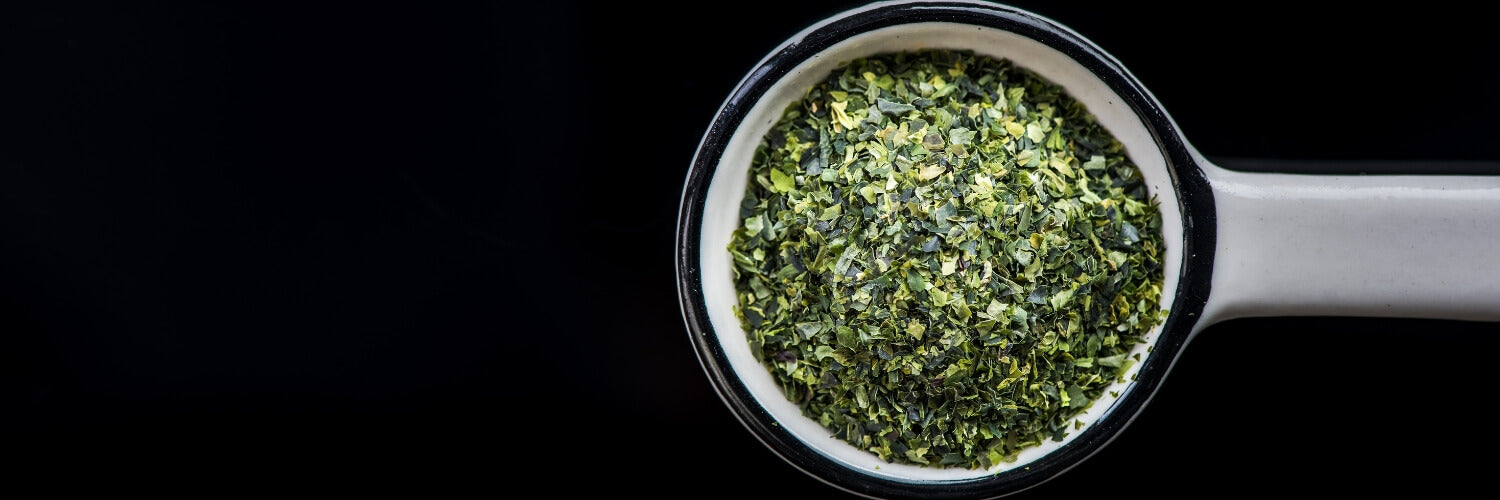
Not to be confused with nori, aonori is another edible seaweed cultivated off the coast of Japan. It is a versatile, flavorful, and aromatic ingredient that is dried and crushed, and used to garnish or season many Japanese dishes, including okonomiyaki, takoyaki, and yakisoba.
Japanese cuisine often utilizes an assortment of different seaweeds as ingredients in many meals. The most popular Japanese seaweeds include nori, which is for wrapping maki sushi rolls; wakame, the main component of miso soup; and kombu, which flavors dashi broth.
But there is another Japanese seaweed that is extremely versatile, though not as popular outside of Japan. Today, we’re introducing aonori. It looks like small flakes version of nori, so at first, it’s really easy to confuse aonori with crushed nori. However, the two are actually completely different seaweeds.
What Is Aonori?
Cultivated in Japan and other Asian countries such as Korea and Taiwan, aonori is an edible seaweed that plays a large role in many Japanese dishes, primarily as a seasoning. And, like many seaweeds, aonori is also rich in various vitamins and minerals, such as calcium, magnesium, and healthy amino acids.
Culinary Uses for Aonori
The most common use of this Japanese seaweed is to add another level of umami-rich flavor to dishes such as okonomiyaki, takoyaki, and yakisoba. Just sprinkle on top, the seaweed enhances the dish and also lends a distinctive and appetizing aroma to the food.
Another great use of aonori is to add additional seasoning to soups and salads, stir-fries, and many other dishes. You can also mix it with various condiments such as mayonnaise, serving as a tasty dipping sauce, marinade, or dressing. Also, mix it in tempura batter, and you can make a unique tempura!
Where to Find Aonori
If you enjoy Japanese food, you’ll definitely want to add this flavorful and healthy seasoning to your pantry items. However, it can be difficult to find in regular supermarkets. Look for aonori in Asian supermarkets, or find it for sale online. It is inexpensive when sold on its own, and you can also purchase it as part of a seasoning mix, such as furikake, a rice seasoning containing aonori, sesame seeds, fish flakes, and salt.
A Funny Thing About Aonori…
People who are already familiar with aonori know that it not only adds more flavor and aroma to many Japanese dishes, it also has the annoying habit of getting firmly stuck to your teeth! It’s an unfortunate side effect of consuming foods garnished with the seaweed flakes, but also easily remedied by brushing your teeth after your meal.
